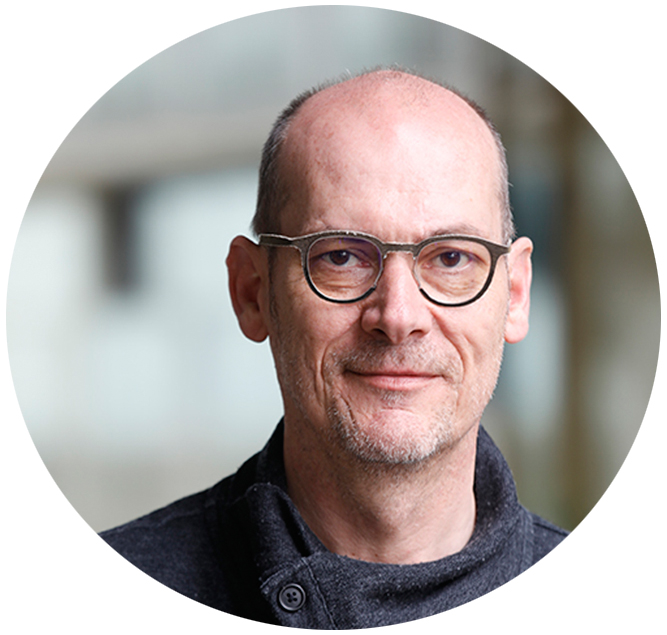The Cell and Tissue Research in Catalonia (CATCAT) network embraces several groups from research institutes and University departments of excellence in Barcelona, including the Institute of Bioengineering of Catalonia (IBEC), the European Molecular Biology Laboratory – Barcelona (EMBL Barcelona), the Department of Medicine and Life Sciences (MELIS-UPF), the Institute of Molecular Biology of Barcelona (IBMB), the Institute of Photonic Sciences (ICFO), the Institute for Research in Biomedicine (IRB), the Institut d’Investigacions Biomèdiques August Pi i Sunyer (IDIBAPS) and the Centre for Genomic Regulation (CRG). The network organizes regular scientific events called “CATCAT Mornings” and the “CATCAT Symposium”.
We talk to Vivek Malhotra, head of the Intracellular Compartmentation lab at the Centre for Genomic Regulation (CRG) and chair of the CATCAT Steering Group.
What are the goals of the CATCAT network?
The goals of CATCAT are to bring together like-minded researchers working on fundamental questions in cell and tissue biology in Barcelona. We organize regular meetings to facilitate collaboration and showcase the excellent science across institutes in the city.
What have been some of CATCAT’s accomplishments so far?
In just over two years, CATCAT has grown from small, informal meetings to events that fill the Barcelona Biomedical Research Park (PRBB) auditorium. We’ve been fortunate to host renowned scientists who interact with local researchers. Alfonso Martínez Arias, who relocated from Cambridge University to MELIS-UPF recently, Michael N. Hall from the Biozentrum, Basel and Ulrich Hartl from the MPI, Munich were keynote speakers in our recent events. Both visitors and researchers have been impressed by the quality of science in Barcelona.
CATCAT also provides a platform for PhD students and junior scientists to present their work and we encourage them to deliver especially fresh and daring concepts.
The goals of CATCAT are to facilitate collaboration between researchers working in cell and tissue biology. Visitors have been impressed by the quality of science in Barcelona.
How does CATCAT aim to foster an environment open to criticism and new ideas?
Criticism and challenging dogmas are vital to scientific progress. CATCAT encourages participation and open discussion to advance our understanding collectively. By bringing together researchers addressing simple questions of fundamental importance, we create a forum for learning from each other’s approaches and insights.
It is essential that there is a culture to allow criticism for breakthroughs in science. A forum like CATCAT aims to cultivate an environment where researchers are open to present their ideas and data in pursuit of new insights. The goal is to focus on data and not the dogma.
What could those new insights be?
We are still looking for answers to the age-old questions like how proteins are trafficked to the right place, how proteins are degraded to maintain the right amounts in a cell, how intracellular compartments are build, how compartments communicate with each other, how a cell is compartmentalized… How are cells assembled into a tissue and what gives the tissue its form? Is the form necessary for function? Could a heart built like a kidney still function as a heart?
It seems like a lot of questions…
After decades of studying fundamental cell biology myself, I see the promise in groups who compose the CATCAT to advance science through open collaboration and exchange of diverse perspectives and expertise. This is what we aim to do. And there are good examples. The Human Genome Project made data openly available as they were produced and encouraged international collaborations. It led to many unforeseen discoveries about human genetics, and the CRISPR-Cas9 genome editing procedure. Here diverse fields like microbial biology, biochemistry and genomics converged to transform this bacterial immune system into one of the most powerful tools in modern biology. This is an example of how diverse groups come together as a community to discover important principles.
“I see the promise in groups who compose the CATCAT to advance science through open collaboration and exchange of diverse perspectives and expertise”
In the website of CATCAT I read that you want to build bridges also to physics, mathematics and engineering. Why?
The physics of biology is becoming very important. We see that certain molecules do different jobs depending on the cellular context. That’s why it’s not enough to know the pieces. We need to look at processes. To do that we require novel procedures and techniques to understand the molecules but also a variety of physical parameters such as physical forces, tension, and the mechanical properties of the matter that compose cells and impact tissue organization.
To understand how molecules work in their cellular context we need to look at processes using novel procedures and techniques to understand a variety of physical parameters.
At present scientists are trying to simulate smaller parts of a cell, because a whole eukaryotic cell is still too complex. And I think this is where the science is going. We need to be able to simulate and model the processes to finally gain understanding. The problem with biology is that we never know if we have all the bits and pieces to come up with a correct model. We need to bring in experts who think like engineers, chemists and mathematicians to help us understand biology.
You called your last CATCAT Symposium “Intracellular machines”. What are those?
Machines produce something, right? It could be a motion. It could be a chemical output. Secretion of a hormone. ATP (energy) production. Each one of these products is the result of a machine. Because a machine requires many parts and each part has its own function, we need to know how the machines are assembled from small parts. This helps in understanding the physiology. If you understand the physiology, then there is a way to explain pathology. And from the knowledge of physiology and pathology, one can develop ideas for therapeutic applications. And yes, those would definitely include engineered intercellular machines.
That sounds fascinating. Any more examples of these machines?
A proteosome is an amazing example of a machine. It’s a shell made of proteins into which unfolded or damaged proteins enter and are degraded. There is another machine which is also made-up of proteins. These are chaperones. Here proteins bind or enter as unfolded entities and are released or exit in a folded form. Another machine is the Golgi apparatus. Thousands of proteins enter and specific enzymes within the Golgi complex add sugars or modify them otherwise. These modifications are then used for targeting the respective proteins to both within the cell and for secretion where they must go and function. The Golgi complex is a very big intracellular machine. An organism itself is a highly structured machine.
What are your visions for CATCAT’s future?
I hope to see CATCAT expand its scope within Spain while maintaining focus on cell and tissue biology. With more support, we could hold scientific events more frequently. The CRG is helping a lot. We are seeking additional resources to push this further. We would like to expand this to reach out to undergraduates, medical students and teachers and professors.
CATCAT could also organize facility tours to showcase Barcelona’s institutes with their cutting-edge scientific platforms and infrastructures. Ultimately, CATCATs in multiple cities may help define regions known for their scientific contributions – putting Barcelona on the map beyond its reputation for sun, sea and sangria. Working together, we can grow the community and advance science and technology.







